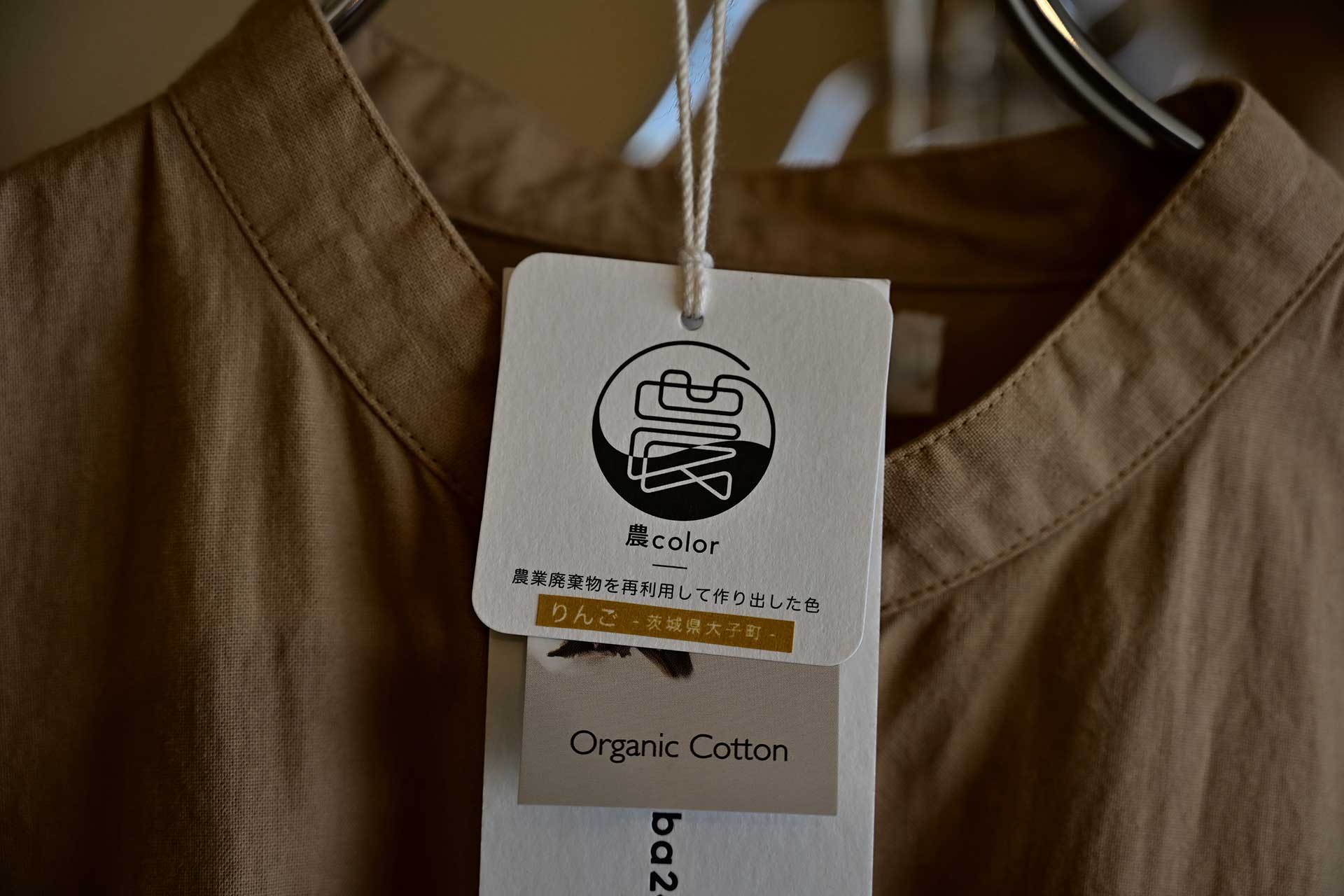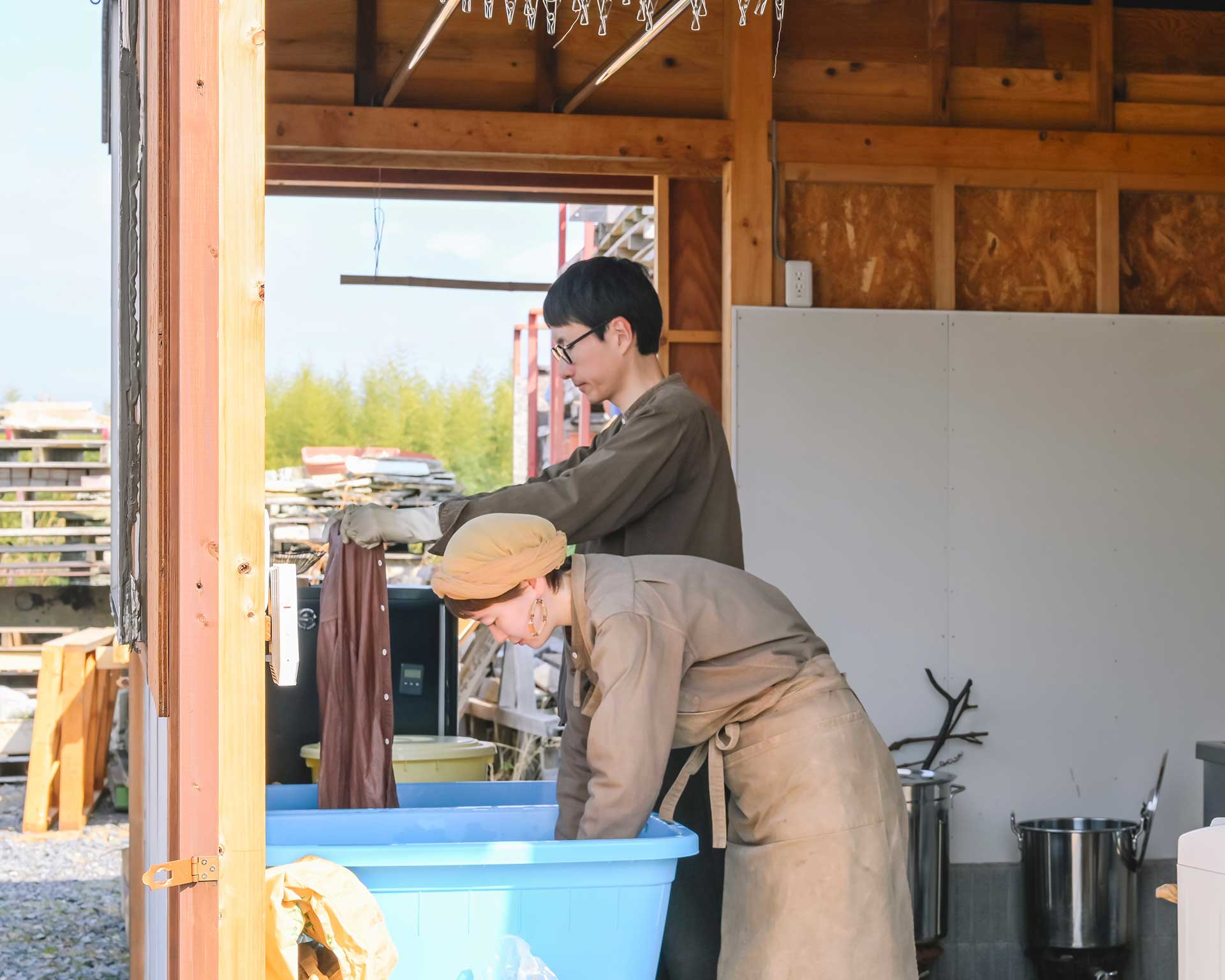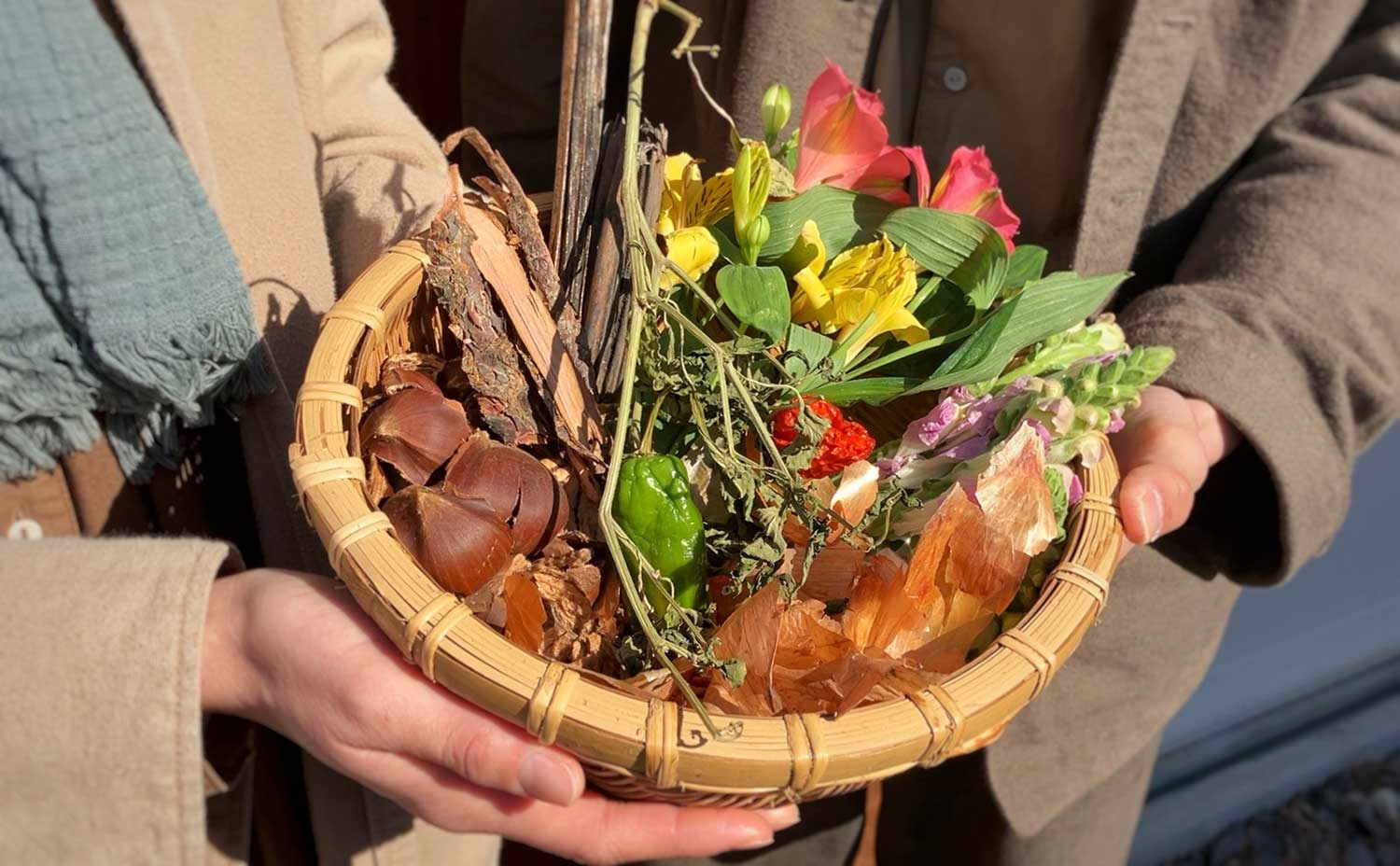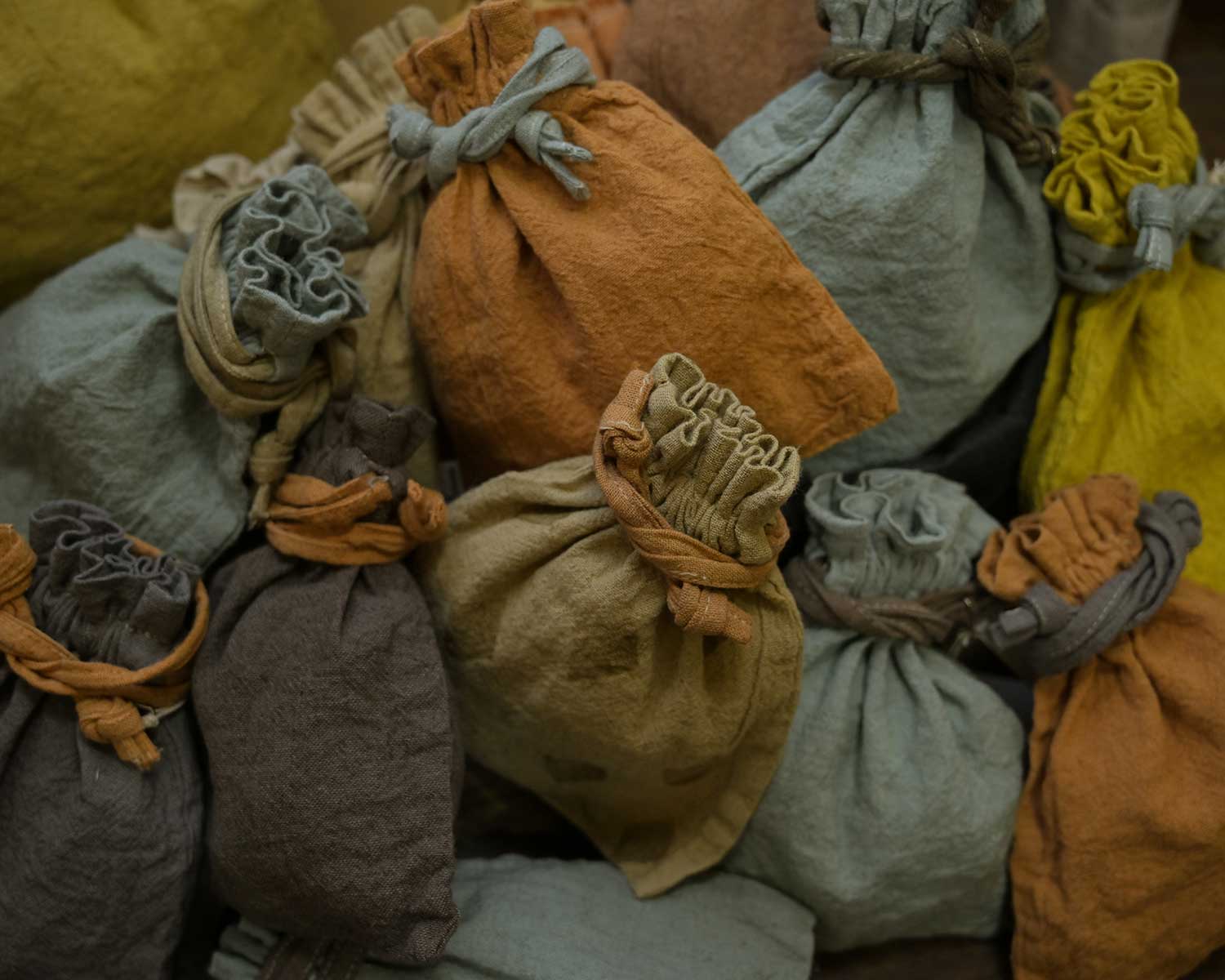
Forest

River

Tradition

Ecosystem
Dyes Using Agricultural Waste: Telling the Story of Local Attractions
Regionality as a garment: Creators dyeing clothes via discarded plants, relaying the richness of Ibaraki Prefecture, Japan
futashiba248
(Ibaraki Prefecture)

Overview
A warm climate and vast lands: That is Ibaraki Prefecture, Japan, located near Tokyo is an agricultural prefecture that records one of the highest production volumes in the country. “futashiba248,” a two-person dye artist collective based in Tsuchiura City, uses agricultural waste provided by producers within the prefecture to dye clothing and accessories.
While this material can certainly be referred to as “waste,” it is a material for which generation cannot be prevented when producing agricultural products… it’s the leaves and branches cut during pruning… it’s the fruit and vegetables that cannot be sent to market, etc. As the brainchild duo behind “futashiba248,” Yuko SEKI and her husband Masafumi named their colors of dye from agricultural waste as “Agricultural Color.” They wish to share the charm of Ibaraki through pieces of dyed work, paying particular attention to the producers and including the crop and place of production on the tags.
Successful outcomes
- Has used approx. 40 different kinds of agricultural waste provided by producers specific to Ibaraki Prefecture
- Dyed works are available for purchase, and they also welcome inquiries from guests bringing their own items that they wish to dye.
- From hearing about their activities, they now receive inquiries from producers in Ibaraki Prefecture about agricultural waste.
- After extracting the dye liquid, some of it is used as compost. They are also planning further utilization for making handmade washi paper, etc.

Bringing out the colors cultivated by the soil as a storyteller
For example, Ibaraki records the highest volume of bell peppers grown in Japan. The stem of the bell pepper plant grows up to about 2 m, and pruning must be done to ensure enough light and breeze. When green pepper leaves provided by bell pepper producers were used to dye their fabric, Yuko and Masafumi saw a bright yellow color appear.
The shell of a chestnut as found inside a chestnut husk creates a soft but deep brown color. A hint of pink was hidden in the branches from a plum garden. Light beige comes from buckwheat hulls. Soft ivory comes from wheat. The yashabushi tree of the birch family relays a relaxing dark brown color. After trying approx. 40 different types of plants, they learned that, in fact, any plant can be used as a dye.

For the mordant, they use iron or aluminum to create different shades of each color so as to fix it. Different shades can also be created by using either the first-extraction dye liquid or extraction dye liquids from later processes. While they roughly have an idea of what the finished product would look like, the final color is a once-in-a-lifetime result each time; as even the same type of crop will create different colors depending on region and season of production.
Masafumi relates: “I was born in Ibaraki, but I didn’t know much about the nature and agricultural industry here.” Masafumi was born and raised in Tsukuba City, a highly urbanized city, and has lived in Tokyo since entering fashion school. He remembers how different things were when he visited Daigo Town, where a lot of people are engaged in agriculture and forestry.
At that time, he often talked to Yuko about starting their own fashion brand one day. Wanting to become a fashion designer, they met each other at a fashion school. It was natural for them to share their goals and work together. Looking for the core element of their brand, they visited a village in Joso City where fabric dye was famous. They also visited an apple orchard in Daigo Town around the same time and experienced the idyllic side of Ibaraki for the first time. Masafumi relates further: “I felt that there are still a lot of people like me who don’t know about the charms of Ibaraki.”
This is where they came across a pruned branch that was to be disposed of. Remembering stories about dyes being created from leaves and trees, they took the branch home. Trying it out at home, they succeeded in bringing out a beautiful yellow color. They wondered: “What if we can use these colors for people to get to know some of the great things in the Ibaraki area?” Once they figured out their brand concept, they named the dye derived from agricultural waste “Agriculture Color.”

In addition to dyeing clothing accessories such as dead stock secondhand clothing, original drawstring bags, and scarves, they also create designs for dresses and tops and dye products sewn by tailors. Each and every tag has the type of crop shown and where it was produced. Through the process of dyeing, Yuko and Masafumi gain the power to convey the charm of Ibaraki into their items.
They relate: “Farmers not only grow vegetables, but they put in the effort to care for the stems and leaves. Chestnut farmers even care about the inner skin under the shell. It was nice to hear things like ‘thank you for opening up new possibilities for chestnuts’ from farmers.”
After the dye is extracted, they use the remains as compost, and they are also planning to produce handmade washi in collaboration with Nishinouchi washi craftspeople in Hitachi-Omiya City. When asked what they would like to try in the future, they smiled and said: “There are 44 cities, towns, and villages in Ibaraki Prefecture; we want to organize a fashion show with items dyed using 44 Agriculture Colors.”
Their items can be purchased by visiting the “futashiba248” workshop in Tsuchiura, through their online store, or at pop-up stores as announced on their social media.
Dyes using agricultural waste
futashiba248
https://www.futashiba248.com/






